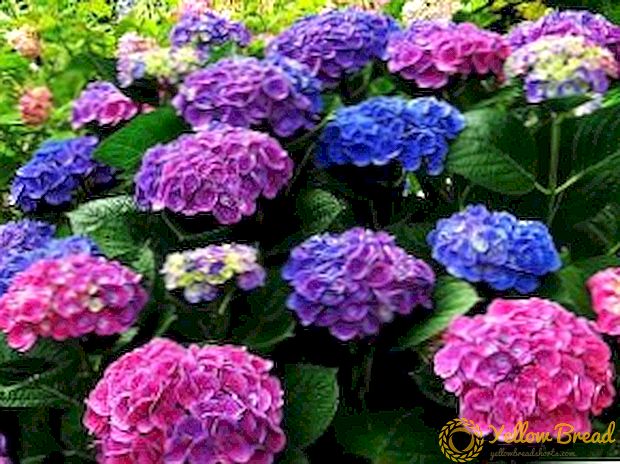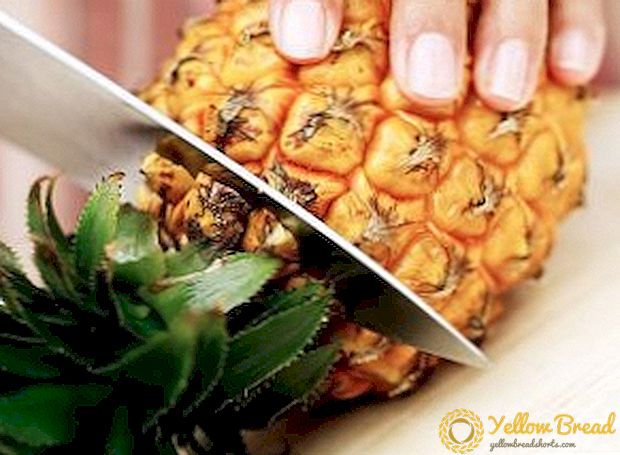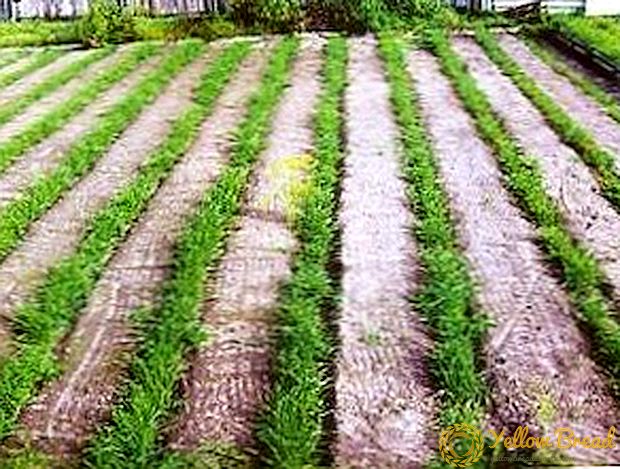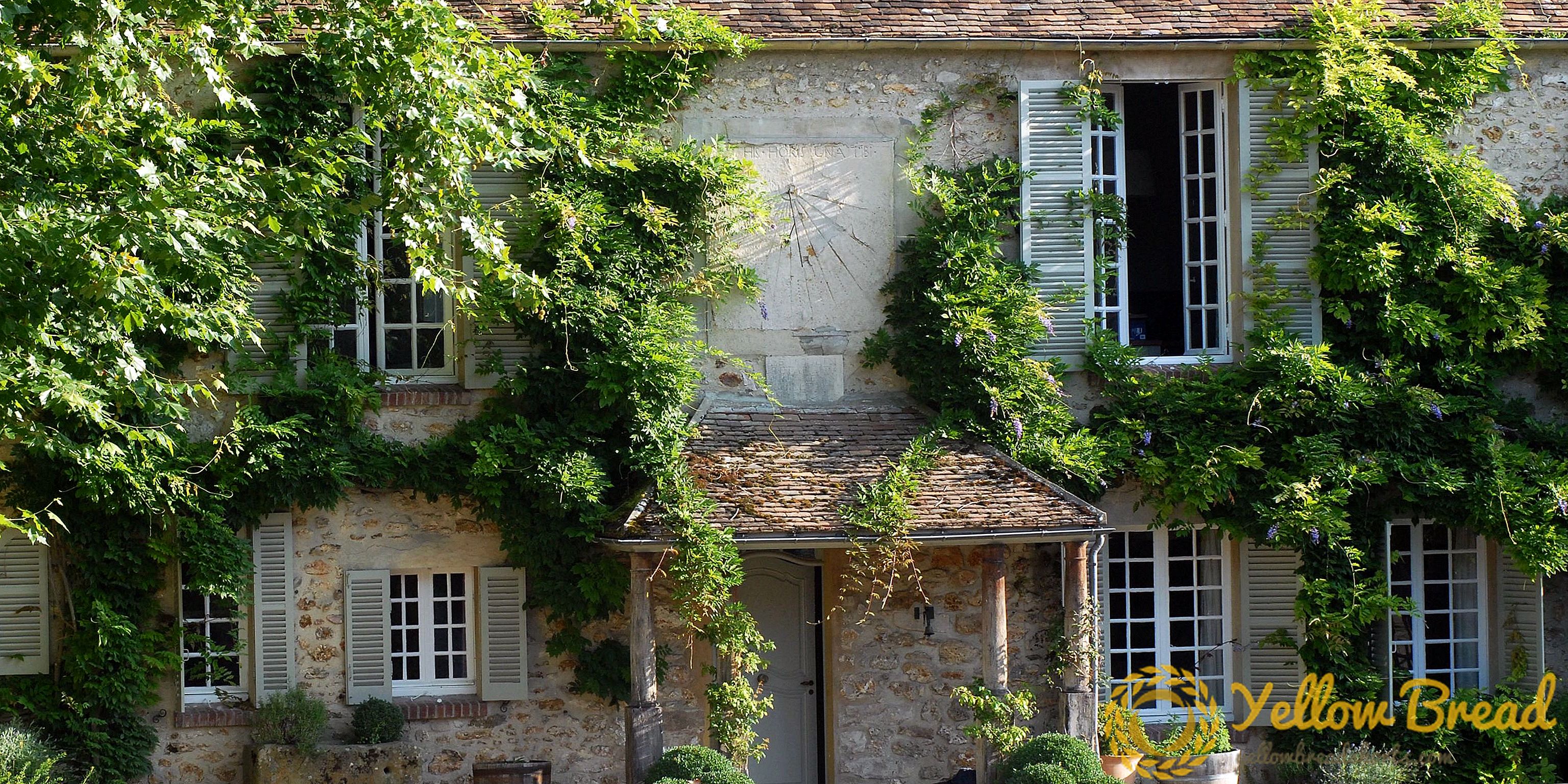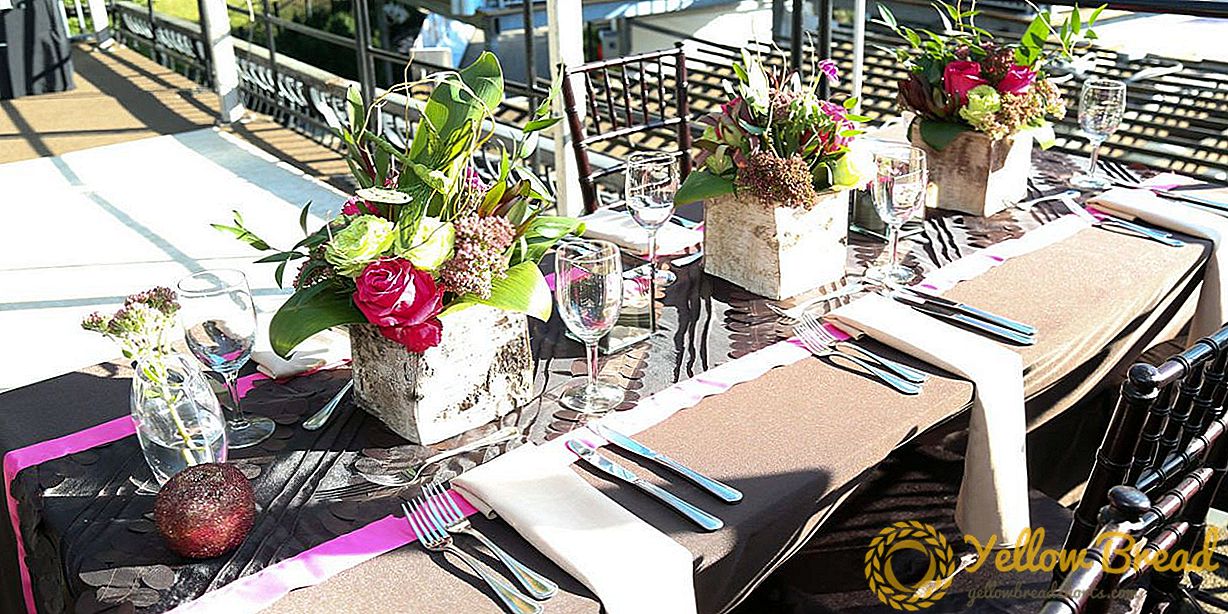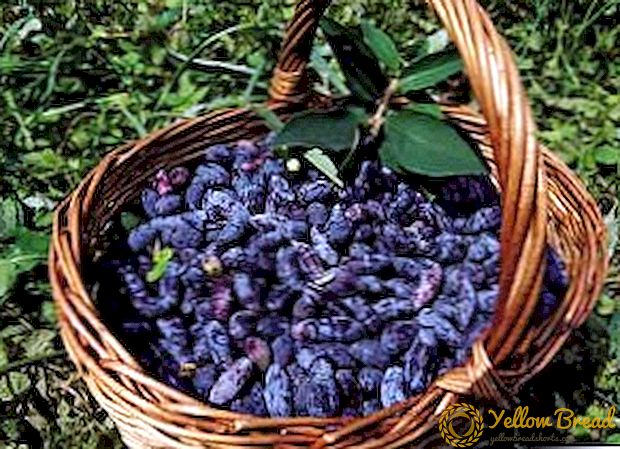 Apple-tree Ural filling differs from its relatives by its bright taste and variety of use. The fruits of this tree are well suited for fresh consumption as well as for drying and making jams. In this article we will present the features of the Ural bulk apple, its detailed description with a photo, as well as the agrotechnology of cultivation and peculiarities of the care of the fruit tree, based on recommendations and reviews of experienced gardeners.
Apple-tree Ural filling differs from its relatives by its bright taste and variety of use. The fruits of this tree are well suited for fresh consumption as well as for drying and making jams. In this article we will present the features of the Ural bulk apple, its detailed description with a photo, as well as the agrotechnology of cultivation and peculiarities of the care of the fruit tree, based on recommendations and reviews of experienced gardeners.
- Inference history
- Characteristic variety
- Tree description
- Fruit Description
- Pollination
- Gestation period
- Yield
- Transportability and storage
- Winter hardiness
- Disease and Pest Resistance
- Application
- How to choose apple seedlings when buying
- Planting apple seedlings Ural bulk
- Optimal timing
- Location selection
- Process and scheme
- Seasonal care features
- Soil care
- Fertilization
- Preventive treatment
- Cropping and crown formation
- Frost and rodent protection
Inference history
This species was bred at the South Ural Institute for Horticultural Research. For this crossed varieties Papirovka and Ranetka Krasnaya. The author of the variety was P. A.Zhavoronkov, breeder from Chelyabinsk.
In the 70s, this apple variety gained considerable popularity, primarily due to its winter hardiness, as well as its ability to adapt and grow well on various types of soils.

Characteristic variety
Ural bulk is one of the best northern species of apple trees. We offer a detailed description of this tree in order to analyze all its positive qualities and disadvantages.
Tree description
With the arrival of spring, this tree begins to grow one of the first. The strength of his growth is average. The krone is rather thickened, rounded. This form is formed due to the fact that apples abundantly shower all branches, because of which the tree has the form of "weeping".
The bark is light gray-green color. Foliage elongated, green and without edge. Shoots are usually thin, have a green color with a brownish tinge.
The flowers are pink in color, small, have a small toothed shape, inside which is a column of pistils of medium length. 
Fruit Description
The fruit on this apple variety grows yellow. They are always smooth and glossy, with a slight sheen. Sometimes on the skin may appear slightly noticeable points. The shape of the fruit is round, the size is quite small.
And the appearance and taste of apples are very close to the variety Papirovka.
It is noteworthy that on young trees the fruits grow larger, about 50-60 g in weight, and on adult fruit trees the apples are smaller - 35-40 g. The stem is the same as in Ranetok, long.
If the tree grows in bright sunlight, the fruit may not be completely yellow, but with a pale pink shade. 
Pollination
Variety refers to samobesplodnyh apple. That is, pollination occurs solely due to the pollen of flowers of other varieties of apple trees that bloom in the same period. An ideal pollinator will be the apple tree Uralets.
The best option would be planting lanes of two different varieties, subject to the distance between them of about 5 meters.
Gestation period
Already by mid-September, the apples begin to ripen. Maturation is divided into three stages, depending on how the fruits are applied, and whether they will process them.
- In early September, collect the number of fruits that go on juices and compotes. This is due to the fact that during this period the flesh is rather dense and ideal for this type of processing.
- The middle and the end of September is the optimal time for harvesting apples that will be eaten fresh. At this time, the pulp is as juicy as possible and has a moderate density.
- Those fruits that will go to the filling for baking, and will also be used for jam, jam, jam, etc. collected in October.

Yield
The yield of Ural bulk varieties is consistently high annually. An average tree can produce 200 kg of juicy fruits, that is, up to 200 centners of fruit can be harvested from 1 ha of pure plantings.
Transportability and storage
If fresh apples are stored in the right conditions, then they can lie for almost two months. It is best to keep them in refrigerators, or in fruit storage facilities at a temperature of 0 ° C.
You should first place them in some kind of wooden containers (containers or boxes), you can also just put them carefully on the shelves. 
Winter hardiness
Apple trees are very winter-hardy. Perfectly can grow in a relatively cold climate. The tree is not afraid of sharp temperature drops and short frosts. According to gardeners, it can withstand -50 ° C or more.
This characteristic feature is an advantage of the Ural bulk among other varieties.
Disease and Pest Resistance
The variety is fairly resistant to scab, but sometimes, under not very favorable conditions, it can be affected by this fungal disease. Also at times, moniliosis harms him.
There is a tendency to sunburn, which must be considered when planting trees. 
Application
Fruits of apple Ural bulk, the characteristics of which are provided in this article, can be used for various purposes. They can be consumed fresh, as the apples are juicy, with honey-sweet taste.
Also, they are great for preservation, preparation of compotes, juices. Apples, which are harvested in a later period, are usually used for making jam and jams.
How to choose apple seedlings when buying
How a tree grows, how beautiful and durable it will be, first of all depends on the correct seedling. It is recommended to buy planting material in nurseries, where they are professionally engaged in the cultivation of young garden trees.
So it will be possible to gain confidence that the Ural bulk apple tree will grow from a sapling, without any impurities of other varieties. In addition, experienced staff will be able to provide advice on planting and care, which will also help the gardener to grow a wonderful tree in his plot.  Saplings with a well-developed root system are recommended for purchase. It is desirable that he grew up in the same climate conditions in which it is planned to land in the future. The young sapling will be the best, because it will be easier for him to adapt to new conditions, he will quickly take root.
Saplings with a well-developed root system are recommended for purchase. It is desirable that he grew up in the same climate conditions in which it is planned to land in the future. The young sapling will be the best, because it will be easier for him to adapt to new conditions, he will quickly take root.
Planting apple seedlings Ural bulk
In order for the apple tree of the Ural filling variety to please the gardener with a rich and tasty harvest, you need to carefully understand the rules of planting and caring for the tree.
Optimal timing
This apple tree belongs to the autumn varieties.You can plant it in the spring, namely in the last days of April, or in the fall - in late September or early October. Autumn landing is still considered optimal. 
Location selection
Site selection is the most important decision at this stage. The terrain is needed light, it is desirable that there is protection from strong cold winds. This is due to the fact that there are usually a lot of fruits on the tree, it is difficult for the branches to withstand such weight, and this process can speed up the strong wind.
The variety is not picky to the soil, but nevertheless the non-acidic soil rich in nitrogen and the most fertile is best suited. Groundwater should not be close to the surface of the site.
Process and scheme
A week and a half before planting the seedlings is planned, you need to prepare the plot, digging it, clearing weeds and, of course, forming the planting holes. The depth of the pit should be about 90 cm, while the width depends on the span of the roots themselves. A mixture of humus, wood ash, topsoil, ammonium nitrate and superphosphate should be made into the bottom.The root system of the seedling should be carefully straightened, trying not to damage the branches, then put the seedling itself in the hole and tie it to the support peg.
Roots sprinkled with earth, then rammed a little. After that, the tree should be plentifully water. It is recommended to plant lanes of different varieties of apple trees at a distance of approximately 5 m from each other.
Seasonal care features
Caring for this variety of fruit trees has a number of features. Let us examine in detail every aspect.
Soil care
The first two or even three years care for an apple tree will include regular watering and weed control. Quite often gardeners podstvolnuyu zone, that is, form an artificial or natural lawn.
Grass that has grown to 10-15 cm can be mowed and left on the plot as a natural mulch. It is important to make watering trees, because the grass has the ability to drain the soil.  Young trees should be watered in the summer about once a month. Each time you need to pour about 3-4 buckets of water under each apple tree. If the soil under the tree is sandy, or the summer is extremely dry, then watering should be increased to one or even twice a week.
Young trees should be watered in the summer about once a month. Each time you need to pour about 3-4 buckets of water under each apple tree. If the soil under the tree is sandy, or the summer is extremely dry, then watering should be increased to one or even twice a week.
The amount of water for an adult fruit tree can be approximately calculated by its age. Take one bucket of water for each year of the apple tree life (a 5-year-old tree needs 5 buckets of water).
It is necessary to provide at least four watering. The first is carried out before bud break, the second - after 2.5-3 weeks after flowering, the third - one month before harvest, the fourth - after the full harvest of fruits, during the fall of the foliage.
Fertilization
Saplings in the first years of life at the new site need nitrogen, phosphorus and potash supplements. In early spring, young trees can be applied with a solution of urea (1 tablespoon per 5 liters of water), in May or June foliar fertilizing with sodium humate or Ideal (1 tablespoon per bucket of water) should be carried out. In September, wood is recommended to fertilize with a mixture of superphosphate (2 tbsp. L.) And water (1 bucket).Dry dressing should be placed in the soil to the depth of the bayonet in a circle of the tree trunks in the prepared grooves. Root and foliar fertilizers must be alternated.
Trees can be sprayed with a solution of urea mineral fertilizer (for 1 bucket of water, 2 tbsp. L.), Wood ash. The procedure should be carried out twice, first before flowering, then after it, making a break of three weeks.
Solutions that are prepared from trace elements (copper, manganese, zinc), should be applied with the beginning of pouring apples.
Preventive treatment
Preventive manipulations are carried out in order to protect trees from diseases (scab, etc.) and pests (moths, green aphids, etc.).
For this purpose, a whitewashing of trunks with lime mixture is carried out in the autumn. Additionally, it is necessary to dig near-trunk circles; it is preferable to do this not with a shovel, but with forks.  All fallen leaves must be collected and destroyed without leaving them in the garden. Bottom overgrowths also need to be removed, as aphids and other harmful organisms can wait there for the winter.
All fallen leaves must be collected and destroyed without leaving them in the garden. Bottom overgrowths also need to be removed, as aphids and other harmful organisms can wait there for the winter.
Cropping and crown formation
Already in the second year of life in a new garden area, young apple trees need to form crowns. To this end, it is necessary to cut off the vertical branches, which have grown strongly, and also to remove unnecessary branches.
Last year's growth should be shortened so that the apple tree grows more in width than in height. Each subsequent year, some adult branches should be removed, thereby stimulating the formation of young shoots and flower buds.
Sick, dry and damaged branches in any way also need to be cut. The correct crown of an adult apple has the appearance of several tiers with 3-4 shoots uniformly distributed in space, which grow close to each other.
The lower branches at the same time should be slightly longer than those that grow higher. The cuts should be smeared with garden pitch, or painted over with red lead. If you regularly cut the crown of an apple tree, it will increase its life expectancy, as well as frost resistance.

Frost and rodent protection
The variety of apple trees Ural bulk just like many other trees, you need to protect from rodents and frost.
- In addition to the whitewashing of trunks in the fall, young saplings can be wrapped with branches of coniferous trees, paper, or other covering material to protect from rodents during the winter period, as well as from frost.

- All rotten fruit that could be under the tree, you need to collect and remove from the site, so that the rot does not bring harm to the future harvest.

- Snow, which will fall in winter, is also better to remove from the tree as needed, so that the branches do not break under its weight.

- Be sure to mulch pristvolny circle before the winter cold.

Having provided the Uralskoye bulk apple with an apple tree, proper care and due care, in return, the gardener is sure to get a rich harvest of delicious juicy apples.





